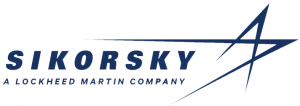For years, machines were aligned using imperfect methods and the process involved wire and string, fishing cord, rulers, and a lot of math. Employees would pull wire across the machines and then measure to various points in order to align their machines for straightness and other geometries. It involved a lot of geometry and it required highly skilled employees to do that geometry. It involved a lot of trial and error and was very time consuming. Today, complexity is reduced using laser alignment equipment. A laser beam doesn’t sag or blow around and if someone accidentally walks through it, it doesn’t break.
The primary advantage to laser alignment is that employees can quickly and efficiently do their own alignment. Companies don’t need to wait for an outside party to come in and align the equipment and by using your own laser alignment system companies can reduce downtime and increase profitability. Equipment can be back up and running in no time. In addition, employees have a better understanding of how their machines work and become better skilled at preventative maintenance.
By adding necessary accessories, laser alignment systems become extremely versatile and can be used for most manufacturing applications. The three key components of a laser alignment tool are a laser transmitter, a digital receiver, and a display. The receiver measures in two axial directions (X&Y). The laser and receiver can be combined with various accessories for specific applications. Accessories include adjustable mounting hardware, leveler rotational mount, 90-Line right angle, precision tripod mount, magnetic on/off mount, and 4-axis precision mounts it. Accessories for spindle alignment include a self contained cylindrical laser and a spindle alignment receiver mount. Accessories for measuring and aligning rolls include a leveler mount, a precision 90-line square plan, two precision tripod mounts, a vertical roll adjuster, and a roll mounting plate.
The digital readings provided by laser alignment systems take the guesswork and errors out of measuring. If the laser transmitter and receiver are resting on a common flat surface, the display will read zero. If the transmitter or the receiver is then raised off the surface, or moved side to side, the differential position will then be displayed. You no longer need to rely on eyesight, rulers, and moving string. The numbers are easily printed out and can be uploaded to the computer for future use.
A laser alignment system is versatile across industries and the measuring process is much easier, more precise, and can be done by employees of all skill sets within a company.


































